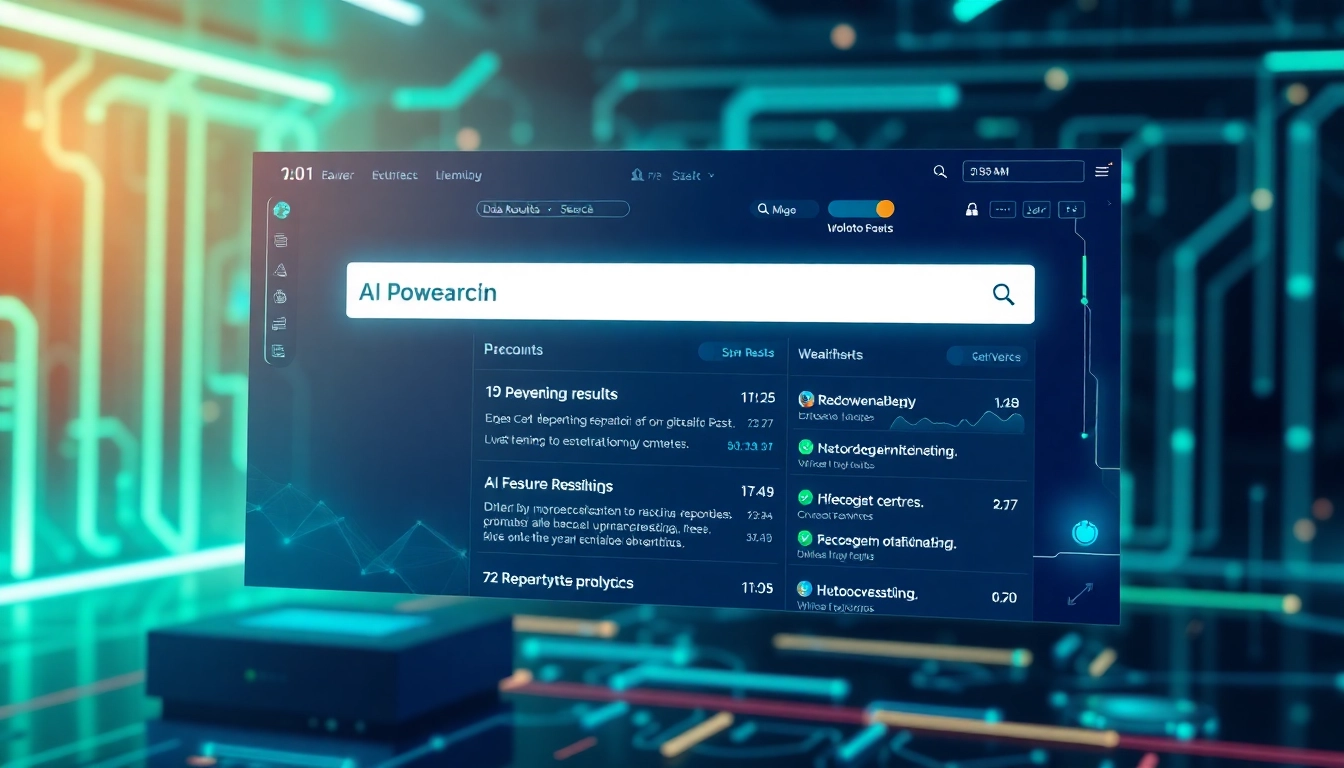The Importance of Site Reliability Engineering
In an increasingly digital world, the demand for reliable and efficient system performance has never been more critical. This is where Site reliability engineering experts come into play. By merging software engineering practices with operational responsibilities, site reliability engineering (SRE) plays a pivotal role in maintaining the health and performance of applications and services that organizations depend on.
Understanding Site Reliability Concepts
At its core, Site Reliability Engineering is about leveraging software engineering principles to create scalable and highly reliable software systems. It encourages a culture of collaboration between development and operations teams, often referred to as DevOps. SREs utilize coding and automation skills to manage systems and operations, fundamentally shifting the focus from manual processes to automated systems.
The primary concept involves defining and measuring reliability through Service Level Indicators (SLIs), Service Level Objectives (SLOs), and Service Level Agreements (SLAs). These metrics help to quantify the service’s performance and reliability, enabling teams to identify where improvements are necessary and to track their progress over time.
Benefits of Site Reliability Practices
Implementing site reliability practices offers numerous benefits for organizations, including:
- Enhanced Stability: By focusing on proactive problem prevention through monitoring and automation, SREs effectively enhance application stability.
- Improved Performance: Continuous optimization of systems leads to enhanced performance, ensuring a smooth user experience.
- Cost Efficiency: Automation reduces operational overhead, enabling teams to focus resources on significant development efforts instead of repetitive tasks.
- Faster Recovery: Incident management practices allow organizations to respond to issues rapidly, minimizing downtime and maintaining customer trust.
Common Myths about Site Reliability Engineering
Despite its importance, several misconceptions surround site reliability engineering:
- SREs are just SysAdmins: While SREs handle system operations, their role is broader, encompassing automation, software development, and collaborating with software engineers to embed reliability directly into the development process.
- SRE means no downtime is allowed: SRE acknowledges that some downtime is inevitable, emphasizing the importance of defining acceptable levels of reliability rather than aiming for zero downtime.
- Implementing SRE is just about hiring experts: While having skilled site reliability engineering experts is crucial, a cultural shift and the adoption of best practices are equally important for successful implementation.
Key Roles of Site Reliability Engineering Experts
Defining Responsibilities and Expertise
Site reliability engineers possess a unique blend of responsibilities, blending development and operations. They are responsible for building, deploying, and maintaining systems that can deliver high levels of performance and availability. Key roles include:
- Incident Management: SREs lead troubleshooting efforts during outages and work on implementing long-term solutions to prevent future incidents.
- Monitoring and Alerting: Setting up robust monitoring systems to proactively detect issues and minimize customer impact.
- Capacity Planning: Analyzing system usage trends to forecast future resource needs and ensure sufficient capacity exists for growth.
- Automation: Identifying repetitive tasks and developing tools to automate these processes, thereby enhancing team efficiency.
Essential Skills of Site Reliability Engineering Experts
To fulfill their responsibilities, site reliability engineering experts require a diverse skill set:
- Programming Skills: Proficiency in languages such as Python, Go, or Ruby is essential for automating tasks and developing tools.
- Systems Knowledge: A deep understanding of the operating systems, networking protocols, and cloud services is crucial for managing and troubleshooting complex systems.
- Database Management: Knowledge of SQL and NoSQL databases enables SREs to maintain data integrity and optimize performance.
- Collaboration: SREs must collaborate effectively with development teams, translating operational needs into actionable engineering practices.
Collaborating with Development and Operations Teams
Collaboration is a cornerstone of successful site reliability engineering. By working closely with development teams, SREs ensure that reliability is considered during the software development lifecycle. This collaboration leads to:
- Shared Responsibilities: Teams jointly own system reliability, creating a culture where both developers and operators are accountable for the end-user experience.
- Feedback Loops: Continuous feedback from production systems allows teams to improve applications iteratively and proactively address issues.
- Improved Communication: Techniques such as blameless postmortems foster open communication, encouraging teams to learn from failures without the fear of repercussions.
Best Practices for Site Reliability Engineering
Implementing Reliable Monitoring Systems
A robust monitoring system is essential for maintaining application health and performance. Best practices include:
- Defining SLIs: Establish clear metrics for monitoring how services perform, such as error rates, latency, and throughput.
- Setting SLOs and SLAs: Create achievable performance and reliability targets that align with business needs to manage expectations effectively.
- Centralized Monitoring Tools: Utilize centralized monitoring dashboards to provide real-time visibility into system health across diverse services.
Strategies for Incident Management and Response
Effective incident management minimizes downtime and enhances recovery speed. Strategies include:
- Incident Response Plans: Develop and regularly update incident response plans to ensure teams know their roles during an outage.
- Regular Drills: Conduct simulation drills to prepare teams for real-world scenarios and improve their response capabilities.
- Postmortem Analysis: After incidents, perform thorough postmortems to analyze root causes and preventations measures, integrating lessons learned into future practices.
Automating Workflows for Efficiency
Automation is one of the most significant advantages of implementing site reliability engineering. Key automation strategies include:
- Infrastructure as Code (IaC): Implement IaC tools to manage server provisioning and configuration automatically.
- Automated Testing: Introduce continuous integration and deployment (CI/CD) pipelines to facilitate seamless code integration and testing.
- Self-Healing Systems: Create self-healing applications that can detect and resolve issues without human intervention.
Measuring the Success of Site Reliability Engineering
Key Performance Indicators for Reliability
To assess the effectiveness of site reliability engineering practices, certain key performance indicators (KPIs) should be measured:
- Availability (Uptime): Measure service availability over time and ensure it meets defined SLOs.
- Error Rates: Track the frequency and severity of errors to identify problem areas that require attention.
- Incident Frequency: Monitor how often incidents occur and the time taken to resolve them, providing insights into overall system health.
Evaluating System Performance Metrics
System performance should be evaluated through a variety of metrics, facilitating informed decision-making:
- Load and Response Times: Assess how systems respond under various loads to ensure scalability and performance.
- Resource Utilization: Monitor CPU, memory, and network usage to optimize resource allocation and avoid bottlenecks.
- User Experience: Collect user feedback and performance metrics to understand the impact on real users interacting with the system.
Continuous Improvement and Feedback Loops
Continuous improvement must be embedded in the SRE process, emphasizing learning from past incidents and steadily enhancing performance:
- Regular Review Meetings: Hold regular retrospectives to evaluate SRE practices and identify areas for improvement.
- Adapting Practices: Stay agile by adopting new technologies and methodologies that enhance reliability.
- Leveraging Data: Utilize data analytics to discover patterns and derive actionable insights for ongoing improvements.
Future Trends in Site Reliability Engineering
The Impact of Artificial Intelligence and Machine Learning
As the field of site reliability engineering evolves, artificial intelligence (AI) and machine learning (ML) will significantly impact operations:
- Predictive Analytics: The use of AI/ML algorithms can help predict potential system failures before they occur, enabling proactive measures and reducing downtime.
- Automated Remediation: AI-driven tools will become capable of automatically resolving issues based on historical data, minimizing the need for human intervention.
- Enhanced Decision Making: Machine learning algorithms can process vast amounts of data to assist SREs in making informed decisions regarding system performance and reliability.
Emerging Tools and Technologies in SRE
The SRE landscape is continuously evolving, with emerging tools and technologies enhancing operational efficiency:
- Serverless Architectures: These architectures simplify scaling and reduce the operational burden, allowing SREs to focus on reliability over infrastructure management.
- Containerization: Technologies like Docker and Kubernetes facilitate microservices architecture, improving deployment speed and reliability.
- Observability Tools: Advanced observability solutions integrate monitoring, logging, and tracing, providing comprehensive insights into entire system states.
Preparing for the Evolving Landscape of Reliability Engineering
The future of site reliability engineering will require SREs to adapt to new challenges:
- Continuous Learning: SREs must stay up to date with technological advancements and best practices to maintain efficient systems.
- Cross-Functional Collaboration: Building stronger ties between teams is crucial to addressing emerging complexities in distributed systems.
- Emphasizing Culture: Building a culture that prioritizes reliability, shared ownership, and accountability will be essential for success.



